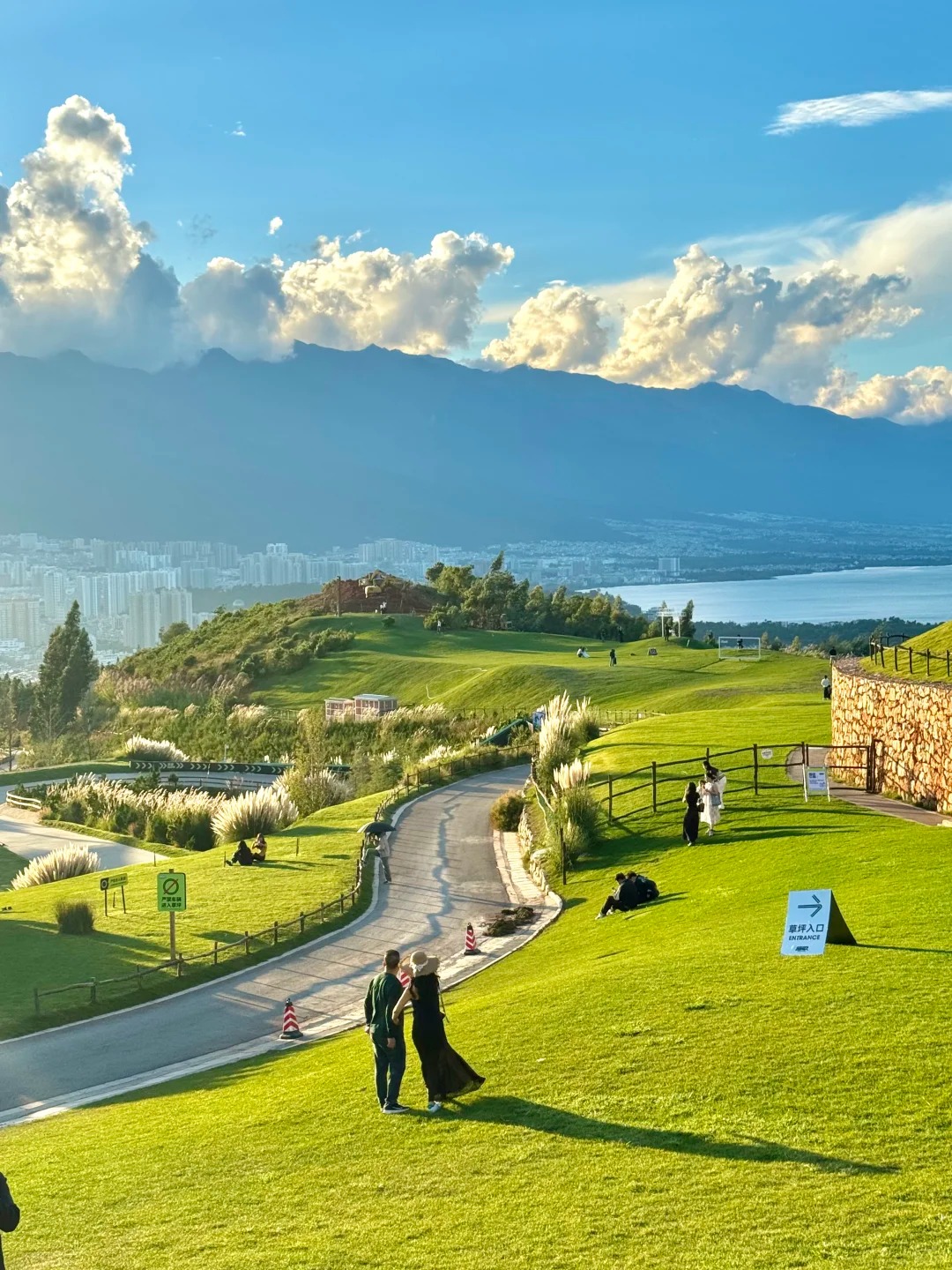Tiger Leaping Gorge in Yunnan isn’t your average hike—it’s one of China’s most breathtaking natural wonders and a dream trek for outdoor travelers. Tucked between the snow-covered peaks of Jade Dragon and Haba Mountains, this gorge cuts deep, wild, and unforgettable. What makes it so special isn’t just the scale—at nearly 3,900 meters from river to ridge, it’s one of the deepest canyons on Earth—but how close you get to it all. Cliffside trails, hanging waterfalls, and remote Naxi villages pull you into a world far removed from city life.Whether you’ve got two days or just one, the routes here cater to every level. You’ll find cozy guesthouses, local meals, and trail signs that mix old-school charm with just enough modern comfort. And if you’re planning a broader Yunnan trip, this spot connects easily with Lijiang, Shangri-La, and even Lugu Lake. This guide lays out the best tiger leaping gorge yunnan options—from trekking tips to transport routes—so you can focus on the views, not logistics.
Why Tiger Leaping Gorge Is China’s Ultimate Trekking Adventure?

Why Tiger Leaping Gorge Is China’s Ultimate Trekking Adventure
Tiger Leaping Gorge’s Location and Landscape
Tiger Leaping Gorge in Yunnan isn’t just a dramatic name—it’s a jaw-dropping canyon carved between two massive peaks: Jade Dragon Snow Mountain and Haba Snow Mountain. The gorge drops nearly 3,900 meters from peak to river, making it one of the world’s deepest canyons. This extreme terrain is part of what draws serious hikers here from all over.
The Jinsha River, a tributary of the Yangtze, rushes through narrow bends, smashing against boulders and cliffs. Along the trail, you’ll see cascading waterfalls, wild mountain goats, and dramatic rock walls that seem to lean over the path. Hike higher, and the views open up into cloud-draped mountains and glacial ridges that feel almost Himalayan.
Highlights:
- Deepest river canyon in China — over 3,900 meters from peak to river
- Iconic high trail between Jade Dragon and Haba Snow Mountains
- Legendary Tiger Leaping Stone said to mark the tiger’s jump
- Guesthouses perched on cliffs with sweeping gorge views
- The 28 Bends: a famous switchback climb rewarding hikers with epic panoramas
Cultural and Historical Context
Tiger Leaping Gorge lies within the traditional homeland of the Naxi people. Their culture—rich in matriarchal customs, pictographic Dongba script, and shamanic practices—is alive in the villages scattered along the trail. You’ll see prayer flags flapping from wooden homes, murals with ancient symbols, and elders wearing traditional blue tunics.
The trail also forms part of the historic Tea Horse Road. Centuries ago, traders led mule caravans through this gorge, moving tea from Yunnan to Tibet and returning with salt and silk. Today, some guesthouses still keep this heritage alive with old photographs and locally inspired dishes like yak stew and barley wine.
Walking tiger leaping gorge yunnan isn’t just physical—it’s cultural. You’re stepping through layers of history, surrounded by traditions still alive in every village stop. You’ll likely be offered tea, stories, and maybe even a chance to try Naxi music if you’re lucky.
Trekking Appeal for Global Hikers
What makes tiger leaping gorge yunnan stand out globally is its perfect balance of accessibility and raw beauty. You don’t need to be a professional climber to hike here. The trail is well-marked, the elevation gain is manageable, and most people can finish the high trail in two days with proper pacing.
But don’t mistake accessible for boring. This trek has suspension bridges over roaring rivers, narrow cliffside paths, and those postcard-worthy viewpoints where clouds part and glaciers appear. You’ll meet backpackers from Germany, solo hikers from Australia, and Chinese students all sharing trail snacks and route tips.
Plus, the infrastructure helps. Clean guesthouses, hot meals, Wi-Fi in some spots, and transport connections to Lijiang and Shangri-La make it easy to plan. Whether you're chasing adrenaline or peace, tiger leaping gorge yunnan is where the world’s hikers meet for one of China’s top outdoor journeys.
Which Trail Fits Your Time and Energy?
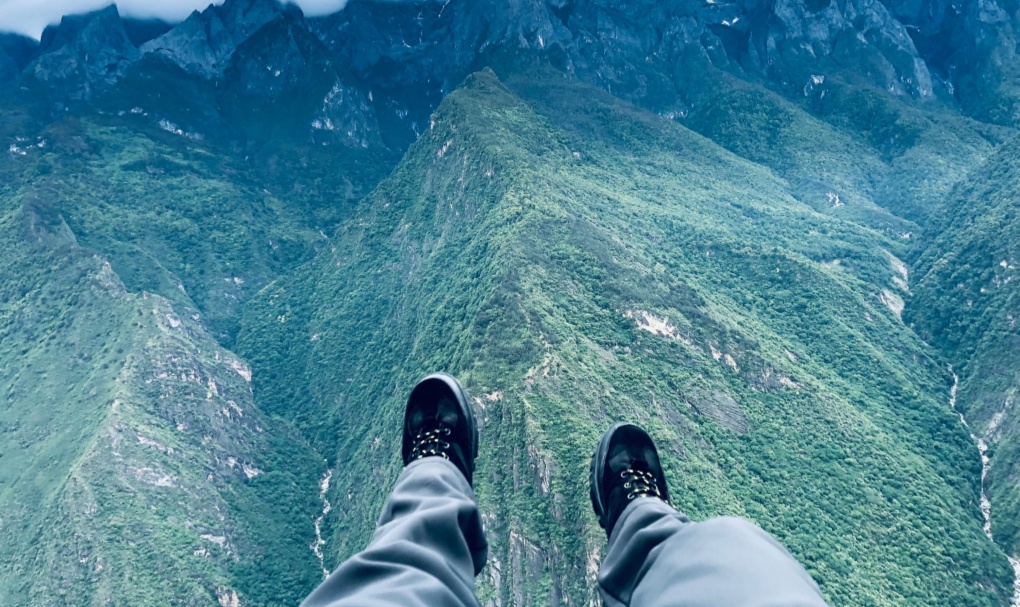
Which Trail Fits Your Time and Energy?
Full Two-Day Trek Overview
If you want the full tiger leaping gorge yunnan experience, go for the two-day high trail trek. It’s the classic route and lets you see the gorge’s most stunning sections without feeling rushed. Most hikers begin at Qiaotou in the late morning and aim to reach Halfway Guesthouse by evening.
The trail on Day 1 includes the famous “28 Bends”—a challenging uphill climb with epic views as your reward. You’ll walk along narrow ridges, pass through Naxi villages, and spot waterfalls cascading off cliffs. Day 2 is slightly easier, with downhill stretches and jaw-dropping river views as you descend toward Tina’s Guesthouse, the typical endpoint.
What makes this trek great is the pacing. You’ll have time to sit on a balcony with a beer, chat with fellow hikers, and wake up to mountain mist. Most guesthouses offer dinner, breakfast, and simple rooms with hot showers. If you’re coming to tiger leaping gorge yunnan for a memorable hike, this route is the one to beat.
One-Day Express Route Options
Short on time? No problem. You can still get a taste of tiger leaping gorge yunnan with a one-day trek. The most popular shortcut is to start at Tina’s Guesthouse and hike up into Middle Gorge. This section gives you a dramatic look at the narrowest point of the river—the actual “leap” where a tiger supposedly jumped across.
From Tina’s, take the short route down to the river via steep ladders and trails. You’ll feel the spray from the raging water and can even walk across giant boulders at the bottom. Some paths are privately maintained and charge ¥10–¥15, so keep small cash handy.
If you only have a day but still want an adventure, this route delivers action, scenery, and local color. You can easily return to Lijiang or Shangri-La by evening. It’s a high-impact, low-commitment way to experience tiger leaping gorge yunnan.
| Time | Activity |
|---|---|
| 7:00 AM | Depart from Lijiang by bus |
| 9:30 AM | Arrive at Qiaotou, buy ticket |
| 10:00 AM | Begin hike from Qiaotou |
| 12:00 PM | Reach Naxi Family Guesthouse, early lunch |
| 1:00 PM | Start high trail section, ascend 28 bends |
| 3:30 PM | Pass Tea Horse Guesthouse, keep hiking |
| 5:00 PM | Arrive at overnight guesthouse |
| 8:00 AM | Breakfast, continue hike |
| 10:30 AM | Reach Tina’s Guesthouse, end of trek |
| 3:00 PM | Board bus to Shangri-La |
Essential Packing List and Pre-Trek Preparation
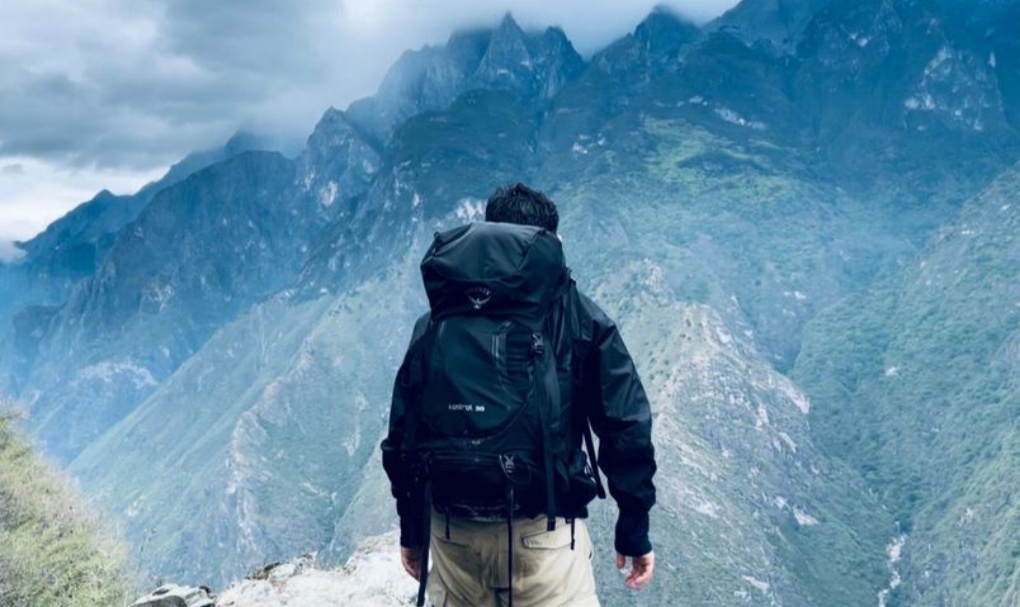
Essential Packing List and Pre-Trek Preparation
Clothing, Gear & Essentials Checklist
Packing smart makes the difference between a great trek and a miserable one. For tiger leaping gorge yunnan, start with proper hiking shoes—no sandals or sneakers. The trail has loose gravel, uneven paths, and steep climbs. Add moisture-wicking shirts, lightweight pants, and a windproof jacket. Rain is common, even in dry months.
Also bring a hat, sunglasses, and sunscreen. The sun hits hard at altitude. A small backpack with a 2-liter water bladder or bottles is key. Snacks like nuts, chocolate, and fruit will help you power through longer sections. Most guesthouses sell food but may not stock what you like.
You don’t need to carry your whole life. But do pack a flashlight (for dark hallways), power bank, toiletries, and a basic first aid kit. Toilet paper and hand sanitizer come in handy too. At tiger leaping gorge yunnan, you’ll be grateful for every gram of smart packing.
Health, Fitness, and Safety Tips
You don’t need to be an athlete to hike tiger leaping gorge yunnan—but some prep helps. Try doing stairs or uphill walks for a couple of weeks before your trip. If you’ve got weak knees, bring trekking poles. They make a big difference on descents.
Altitude isn’t extreme (2,000–2,600 meters), but you may feel lightheaded if you're coming straight from sea level. Go slow on Day 1, drink lots of water, and rest when needed. Most people do just fine, but don’t push if your body says no.
The trail isn’t dangerous, but rain can make parts slippery. Always check the weather forecast, especially in summer. Landslides aren’t common but do happen. Stick to main trails, and don’t hike after dark. Let someone at your guesthouse know your route if hiking solo.
Fees, Signage, and Local Regulations
The entrance fee to tiger leaping gorge yunnan is around ¥65, payable at the ticket booth near Qiaotou. Keep the ticket—it’s occasionally checked along the route. Some side paths (like to the river) have small charges too, usually ¥10–¥20, managed by local villagers.
Signage has improved a lot in recent years. Many trail signs are in both Chinese and English, though not all are accurate. Apps like Maps.me or AllTrails help with offline navigation. You’ll rarely get lost if you stay on the main trail.
Respect local customs: the gorge passes through Naxi villages. Don’t pick crops, shout loudly, or litter. Toilets are available at guesthouses—use them instead of the bushes. Tiger leaping gorge yunnan is not just a hiking spot; it’s home to real people, and hikers are guests on their land.
Where to Stay and What to Eat Along the Trail?
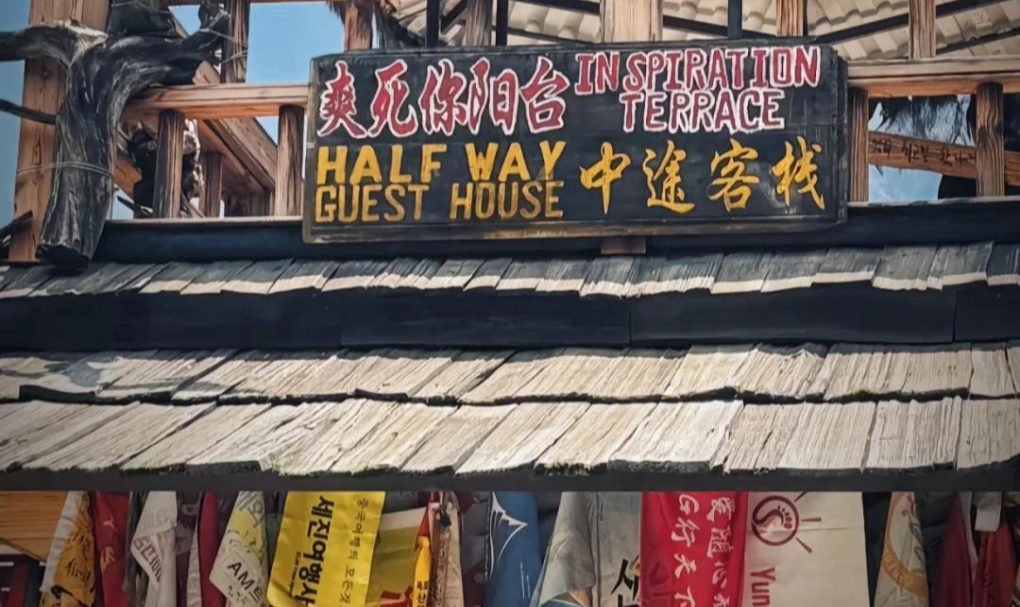
Half Way Guest House
Scenic Guesthouses with Trekker-Friendly Services
The best thing about tiger leaping gorge yunnan? You don’t need a tent. Along the high trail, you’ll find guesthouses built for hikers—with mountain views, hot food, and comfy beds. Most people stop at Naxi Family Guesthouse, Tea Horse Guesthouse, or Halfway Guesthouse on the first night. These places are simple but reliable.
Rooms usually cost ¥60–¥150 depending on private vs dorm options. Showers are warm (most of the time), and Wi-Fi works in common areas. Some spots like Tina’s Guesthouse are more modern, offering laundry, meals, and transport booking for the next leg of your trip.
Many owners speak basic English. They’ll help you plan timing, give trail updates, and even pack a boxed lunch. If you’re unsure where to sleep, just ask other hikers—everyone’s going to the same few places. At tiger leaping gorge yunnan, community and comfort go hand in hand.
Local Food Options and Vegetarian Choices
You won’t go hungry here. Guesthouses serve up warm meals using local ingredients—think fried rice, yak meat noodles, or stir-fried veggies with tofu. Breakfast is usually simple: eggs, toast, or pancakes. Some even offer homemade granola and fresh-brewed Yunnan coffee.
Vegetarian? No problem. Most kitchens can whip up potato dishes, steamed greens, tomato-egg stir fry, or fried noodles without meat. Just say “bù yào ròu” (不要肉). Vegan is a bit trickier, but still possible if you're flexible.
Water is available to buy, and some guesthouses offer free refills if you bring a bottle. Skip raw salad and unboiled water just to be safe. Dining at tiger leaping gorge yunnan isn’t fancy—but it’s hearty, filling, and made with mountain hospitality.
Booking Tips and Language Assistance
In low season, you can show up without a reservation. But in spring and fall, book at least the first night. Use platforms like Trip.com or Booking.com, or message the guesthouse on WeChat. Many places accept cash or Alipay, but not all take foreign cards.
Not fluent in Mandarin? No worries. Most guesthouses along tiger leaping gorge yunnan are used to foreigners. Download a translation app (Google Translate works well), or prepare a few phrases. Many places also have bilingual menus and trail info printed in English.
A few tips: arrive before sunset to avoid trekking in the dark. Confirm dinner time when you check in—kitchens usually close by 8 PM. And always double-check directions for the next morning. Tiger leaping gorge yunnan is still off the grid, but a little planning keeps your adventure smooth.
Getting There and Exploring Beyond the Gorge
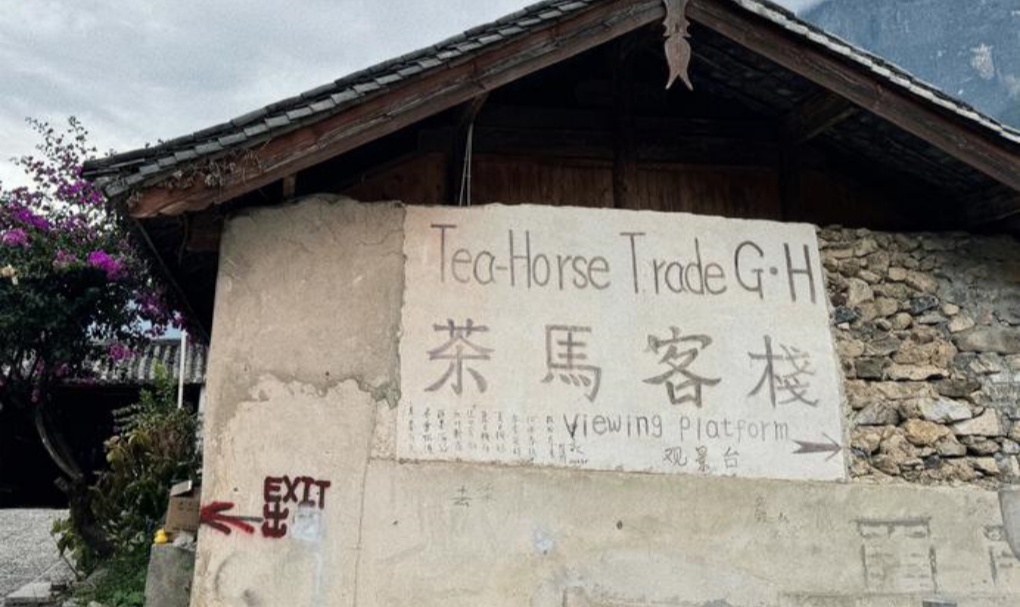
Tea-Horse Trade G·H
Transportation from Lijiang and Shangri-La
Reaching tiger leaping gorge yunnan is easier than it sounds. Most travelers begin in either Lijiang or Shangri-La—both have direct bus or van options to Qiaotou, the starting point of the hike.
From Lijiang, take a bus from Lijiang Transport Service Center. The ride takes about 2.5 hours and costs around ¥40. Buses leave in the morning, typically at 8:00 AM or 8:30 AM. From Shangri-La, the route is a bit longer—about 4 hours, costing ¥60–¥70, with fewer departures each day.
You can also hire a private car (¥300–¥500) or join a small group ride if your schedule is tight. Just ask your guesthouse or hostel to help you book. For most travelers, Lijiang is the preferred base due to better transport, but both cities connect smoothly to tiger leaping gorge yunnan.
Suggested Add-on Destinations Nearby
Tiger leaping gorge yunnan is incredible, but don’t stop there. The region around the gorge is full of other unforgettable spots. One popular add-on is Lugu Lake—about 4–5 hours from Lijiang, offering peaceful lakeside villages and a deep dive into Mosuo matriarchal culture.
Another great option is Shangri-La’s Songzanlin Monastery. This Tibetan-style complex sits high in the hills and feels like a smaller version of Lhasa. You can also explore Pudacuo National Park nearby, filled with alpine lakes and yak herders’ trails.
For a quieter escape, head to Baishuitai (White Water Terraces). It’s lesser-known, but the mineral formations and mountain views make it worth the trip. Tiger leaping gorge yunnan opens the door to some of China’s most scenic and spiritual corners—so take your time and go beyond.
Best Seasons and Weather Considerations
Timing your trip to tiger leaping gorge yunnan makes a big difference. The best months are April–June and September–October. Skies are clearer, temperatures are mild, and trail conditions are ideal. July and August bring heavy rain and potential landslides, while winter gets cold and icy.
Always check the local forecast before setting off. Rain can turn the trail slippery, especially in narrow or exposed sections. Avoid hiking right after big storms—it’s not worth the risk. Guesthouses often post weather updates or share trail advice, so stay informed.
Bring layers no matter the season. Even in summer, mornings and nights can be chilly at high altitudes. A waterproof jacket, sun protection, and a small flashlight go a long way. Tiger leaping gorge yunnan is safe for most hikers—but only if you respect the weather and trail conditions.
Frequently Asked Questions (FAQs)
Q: How long does it take to hike the entire Tiger Leaping Gorge trail?
Most hikers take two full days to complete the main trail. The classic high trail spans around 22 kilometers. It includes steep climbs, narrow paths, and river views. Some travelers rush through in one long day. But that means less time to enjoy the scenery. The first day usually starts from Qiaotou and ends at Halfway Guesthouse. That leg takes around 5 to 6 hours. The second day leads to Tina’s Guesthouse, another 4 to 6 hours. Pacing is key here. Take breaks and hydrate often. Don’t hike too fast just to finish early. July and August bring heat and afternoon rain. So mornings are better for long stretches. You’ll pass farms, waterfalls, and suspension bridges. Don’t expect smooth paths. Some rocky sections slow people down. Weather and fitness both matter a lot. If you're fit and start early, it’s manageable. But if you're new to hiking, add an extra night. Rest at one of the guesthouses and enjoy mountain food. Two days allow you to walk without pressure and take in the views. That’s why the full trail experience feels more rewarding.
Q: Can solo travelers safely hike Tiger Leaping Gorge in Yunnan?
Yes, solo travelers hike it all the time and stay safe. The trail is well-trodden and dotted with signs. Guesthouses are spaced at walkable intervals. Most hikers stick to the high trail route. Locals are friendly, especially around Naxi villages. Still, a few precautions go a long way. Start early in the day and carry plenty of water. July brings both heat and flash rain. Bring a power bank and a flashlight just in case. Offline maps like Maps.me work well here. If you're solo, let someone know your plan. Most guesthouses have Wi-Fi, so you can check in. Hike during daylight, and avoid river-edge shortcuts. For emergencies, Tina’s Guesthouse offers a driver service. Cell signal comes and goes but usually returns at stops. Don’t wear headphones the whole way — be alert to loose stones. Solo hikers should also check weather before starting. Landslides can close parts of the trail. But in normal conditions, it’s a solo-friendly hike. You’ll likely meet fellow hikers along the way. Many start out solo and finish with new friends.
Q: What’s the difference between Upper, Middle, and Lower Tiger Leaping Gorge?
The gorge has three sections, each offering a different vibe. The Upper Gorge starts near Qiaotou. It’s the most popular and has better infrastructure. You’ll pass the 28 Bends, a steep uphill climb with epic views. This part includes most guesthouses like Halfway and Tea Horse. The Middle Gorge is rockier and wilder. It includes the famous Middle Rapids and the “Ladder to Heaven.” Some parts are steep and slippery, especially in July. This section attracts thrill-seekers and photographers. The Lower Gorge is closer to Daju and less traveled. Views are still stunning but less dramatic. Roads here are better for drivers or bikers. You won’t find many guesthouses in the lower stretch. Most travelers stick to the Upper and Middle routes. These offer the best mix of views and adventure. For those with limited time, just doing the Middle Gorge works well. You’ll still get the dramatic cliffs and roaring waters. Choose based on how long you have and how much climbing you can handle.
Q: Is it possible to do the hike without a local guide?
Yes, most hikers walk Tiger Leaping Gorge without a guide. The trail is well-marked with arrows and signs in English. Guesthouses give simple maps and advice. It’s one of the few treks in China you can do solo. Still, there are things to watch out for. Some junctions can confuse first-timers. Check updated maps or ask locals. July weather changes fast, so don’t rely only on old blogs. Online apps like Maps.me help track your route offline. Local guides are useful if you want stories or shortcuts. They also help in bad weather or if you’re unsure about fitness. But for most people with hiking experience, no guide is needed. Just bring the right gear and walk during the day. Talk to guesthouse staff in advance — they know trail conditions. They may also warn you about recent landslides or closures. So while a guide adds depth, it’s not essential here. Independent travel works fine in Tiger Leaping Gorge.
Q: What kind of fitness level do I need for hiking Tiger Leaping Gorge in Yunnan?
You don’t need to be an athlete, but you should have basic fitness. The trail includes steep climbs, narrow paths, and long walks. Most people walk 10 to 12 kilometers per day. That takes about 5 to 7 hours, depending on pace. There are plenty of ups and downs. The famous “28 Bends” section, for example, is a real leg workout. But the trail isn’t technical. No ropes or climbing gear are needed. Just solid legs and decent balance. First-time hikers can manage with some preparation. If you can walk stairs for 30 minutes without gasping, you’ll be okay. July heat makes it harder, so pace yourself and take breaks. Carry enough water and wear a hat. Walking poles help with steep sections. You can also plan a shorter one-day hike in the Middle Gorge. That’s a good option for less experienced trekkers. Guesthouses along the way offer meals and beds, so you don’t need to carry much. All in all, this is a moderate trek, not an extreme one. As long as you’re healthy and take it slow, it’s doable.
Q: What food and drink are available during the Tiger Leaping Gorge hike?
You won’t go hungry on this trail — food is everywhere. Guesthouses along the route offer hot meals, drinks, and snacks. Common dishes include fried rice, stir-fried veggies, and yak meat noodles. You’ll also find dumplings, egg pancakes, and banana pancakes for breakfast. Tea, beer, and bottled water are easy to get. Most guesthouses also sell energy bars and instant noodles. In summer, drink often and refill your bottles. Safe boiled water is usually free or cheap. Bring a reusable bottle to cut down on waste. Vegetarian food is available, just ask ahead. Most places are used to foreign guests. Menus are often in English or have photos. Some even offer Western-style meals like pasta or sandwiches. But expect local flavors — salty, oily, and comforting after a long day. Avoid drinking straight from the river or taps. Stick to bottled or boiled water. If you have dietary needs, carry a few backup snacks. But honestly, the food is one of the best parts. Eating fried rice on a wooden deck facing the mountains? Priceless.
Q: Can I hike Tiger Leaping Gorge in Yunnan during the rainy season?
Technically yes, but it comes with risks. July and August are part of the rainy season in Yunnan. Afternoon storms are common, especially after 2 PM. That’s why most hikers start early in the morning. Rain makes the trail muddy and slippery. Some narrow paths become dangerous. Landslides also happen more often in heavy rain. Local guesthouses usually know the conditions. Ask before starting your day’s hike. If weather looks bad, wait it out. Bring a rain jacket, pack cover, and quick-dry clothes. Good hiking shoes with grip are essential. Avoid wearing sandals or cheap sneakers. Some sections may close if there’s flooding or rockfall. That’s more likely in the Middle Gorge. Still, many people hike in July — just carefully. Check forecasts daily and listen to advice. Dry mornings and rainy afternoons are the pattern. Hike early, rest in the afternoon. You’ll still enjoy the views, mist, and waterfalls. But don’t push it if the trail feels unsafe. Safety first, always.
Q: What are the accommodation options along the Tiger Leaping Gorge trail?
The trail has great guesthouses spaced perfectly for trekkers. Most offer meals, Wi-Fi, and hot showers. Halfway Guesthouse is a favorite with views over the gorge. Their deck is famous for sunrise coffee and noodle soup. Tea Horse Guesthouse is another popular stop on Day 1. Tina’s Guesthouse near the end offers pickups, trail info, and solid food. Rooms are basic but cozy. Expect twin beds, warm blankets, and shared bathrooms. Prices range from ¥60 to ¥180 depending on season and room type. Some newer guesthouses also offer private rooms with mountain views. You don’t need to carry camping gear unless you want to sleep outside. Most places accept WeChat Pay, Alipay, or cash. Booking ahead is smart in peak summer months. July brings both local and international crowds. If you prefer quiet, avoid weekends. These guesthouses are more than beds — they’re part of the trail culture. You meet hikers, swap tips, and rest your legs. Waking up to clouds drifting over the gorge? Totally worth the hike.
Want more China travel ideas? Check out our city guides on Beijing, Shanghai, Guangzhou, and Chengdu.


